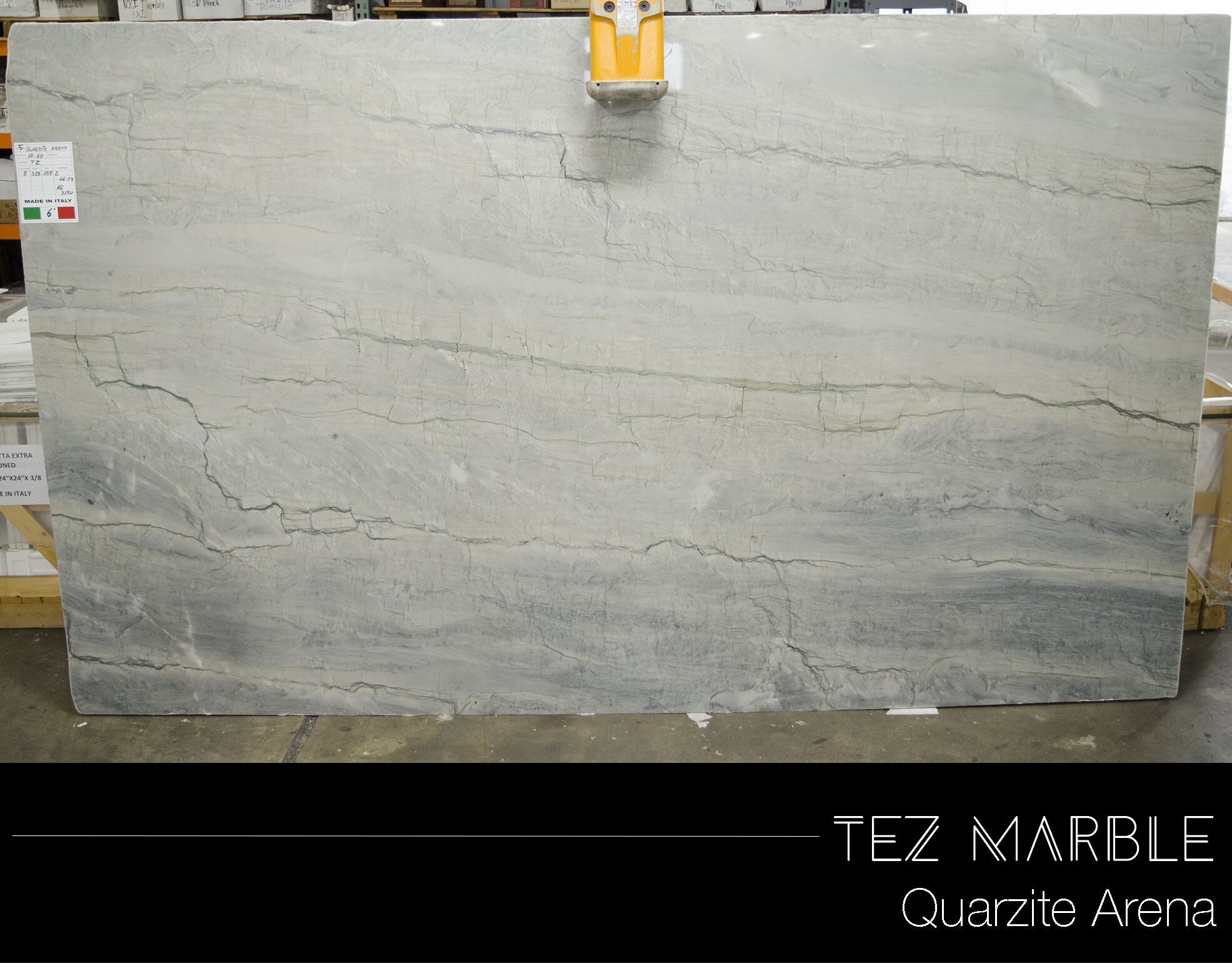Most people usually need clarification regarding this natural stone. An alarming data disparity on quartzite can be found with an internet search. Some claim that it etches, while some claim it doesn’t. You may occasionally hear that it is a cross between granite and marble. Others, however, claim that it is tougher than granite. How is this? Why are claims concerning quartzite so contradictory? Let’s find out what it really is and what it can be used for.
What is Quartzite?
Quartzite is a metamorphic rock composed almost completely of quartz. Quartzite starts its geological life as grains of sand on a beach, sand dune, or riverbed. Sandstone is formed when sand particles become compressed and bind to one another over time. The sandstone becomes hotter and more condensed as it is buried further and deeper beneath layers of rocks. With enough temperature and pressure, the grains of sand lose their initial form and combine with other minerals to produce a thick, strong rock. This rock is quartzite. Due to the light hue of quartz sand, quartzite is typically white or light in color. Groundwater can also carry extra minerals that can add green, blue, or red tints.
Characteristics of Quartzite
- Hardness
When it comes to upgrading kitchens and bathrooms, granite has virtually taken over. Quartzite, on the other hand, has caused granite’s supremacy to weaken. Quartzite ranks 7 on the Mohs Scale, while granite rates around 6.5. This indicates that it is unquestionably more durable than granite. There is, unfortunately, a term “soft quartzite” that has been reported circulating the market. However, soft quartzite does not exist. There is just one type of quartzite, and it is very hard. A soft quartzite rock is almost certainly marble. So, be careful when shopping for quartzite countertops, slabs, or tiles. Granite will not etch or scratch. You can test it out by trying to scratch the quartzite surface with a piece of glass.
- Acid and Heat Resistance
Due to its striking similarity in style and appearance to marble, quartzite is frequently mislabeled as marble in stone yards. They even call them “soft quartzite”, although it is unmistakably a marble, as was already established. Acids like vinegar or lemon juice won’t etch quartzite. A quartzite rock has been falsely labeled if acid causes it to become etched. On the contrary hand, marble will etch from such acids. Dolomitic marble is slightly slower to etch than other marble. Quartzite, however, will not be in any way etched by common kitchen acids. Not even slightly! If you’re in the market for a quartzite countertop and want to ensure it is quartzite, you can do a little test. Bring home a small piece and put a drop of lemon or vinegar on the surface. Let it stay overnight and see if the surface discolors in the morning. If you find any discoloration, it is not a quartzite.
This mineral has a naturally high resistance to heat and scratches since it is composed of sandstone, which is subjected to extreme temperature and pressure beneath the Earth’s surface. You can, with no worry, put your hot pans and other cookware on top of it.
- Porosity
The porosities of quartzite vary. Some minerals are closely bound together due to intense metamorphoses, such as the Taj Mahal quartzite or the Sea Pearl quartzite. However, White Macaubas quartzite and Calacatta Macaubas quartzite are more porous since they have been subjected to less pressure; therefore, sealing will be useful for them.
Colors of Quartzite
This mineral is often white to gray. This mineral has color changes because of the inclusion of other minerals and oxidation from contact with air. For example, the iron in the mineral, when oxidized, will give red and pink color. Orange, yellow, green, and blue are some more colors that can be seen; these hues are caused by the presence of different minerals in quartzite. This mineral countertop is available in a huge variety of colors and patterns on the market. Azurra Bay, Fusion Blue Quartz, Dakar, and the Taj Mahal are the most well-known types.
Cost of Quartzite Countertops
In general, the cost of a mineral such as quartzite is determined by two key factors: availability and location. When demand for a material rises, there is a high likelihood that its price will rise as well. Additionally, there is a significant probability that the price will rise if you live in a location far from where the mineral is mined or has a high cost of living. Generally, you can get quartzite countertops for as low as $50 per square foot. The cost can go up to $150 or more.

